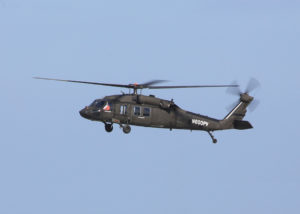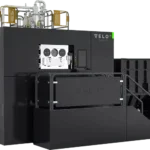
For the better part of an hour on May 29, one of the oldest existing UH-60 Black Hawks was flown with a full-authority fly-by-wire flight control system that eventually could allow the aircraft to fly without a pilot on board. Sikorsky [LMT] has developed a kit that removes all legacy mechanical flight controls from the aircraft and replaces them with its MATRIX technology to make it an optionally piloted vehicle. The company uses the phrase “optimally piloted vehicle” almost interchangeably…

 By
By 











